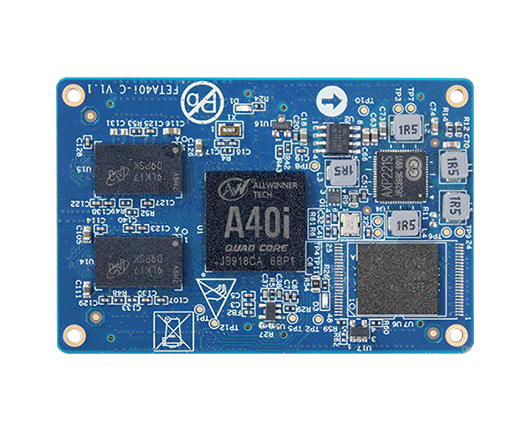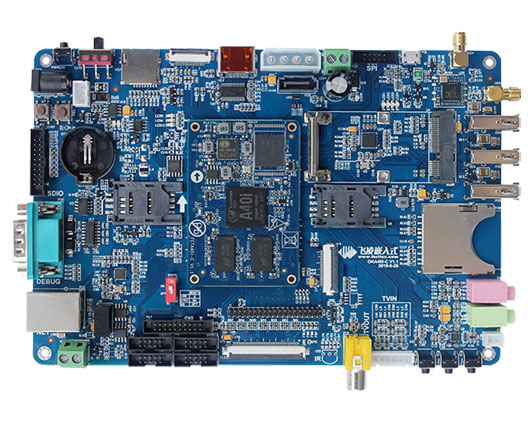
Laser printer solution based on Allwinner A40i
Introduction to laser printer
A laser printer is through high-energy laser directly focused on the surface of the object, and with the focus of the beam on the surface of the marked object regularly moving, while controlling the appearance of the laser, on the surface of the object to form a specified marking pattern.
Laser marking has the characteristics of non-contact marking, fast marking speed, small pollution, no consumables loss and clear and permanent marking, and is gradually replacing the traditional inkjet machine.
Classification of printers
The inkjet printers appearing in the market can be roughly divided into small character inkjet printers, large character inkjet printers, high-resolution inkjet printers, laser inkjet printers, handheld inkjet printers, etc. according to their different functions.
Small character inkjet printer: It can be used in almost all industries, has a wide range of uses, and occupies 80% of the market. Unsuitable type: silicone rubber.
High-resolution inkjet printer: suitable for a few industries such as plastic pipes and cartons.
Hand-held inkjet printer: suitable for large products such as plates and cartons and products without fixed production lines.
Laser printer: It is suitable for almost all industries. For the wine industry, the temperature is very high and the ink is not suitable for printing. Laser printers can only be used for printing.
According to the different consumables used, inkjet printers can be divided into inkjet printers and non-ink inkjet printers, that is, laser printers. Its performance is more prominent in anti-counterfeiting, flexibility, and reliability.
● The marking content of the laser printer is clear and permanent, cannot be erased and changed, and the anti-counterfeiting effect is obvious;
● The number of lines and font size of the laser coding information is not limited;
● The laser printer can work continuously throughout the day without maintenance time Long, with little environmental impact. Inkjet printers are affected by the environment, temperature and dust changes block the nozzles, and the maintenance workload is large and the environment is greatly affected.
Applicable Material
Plastic material, wood material, bamboo material, glass material, acrylic material, leather material, cloth material, wool material, etc.
Laser printer structure
The structure of the laser printer is mainly composed of a control system, a laser system, a scanning galvanometer system, a power supply system, and a transmission mechanism.
- Control system: The control system is the core part of laser marking machine, its main task is to edit and process the marking content, generate marking data and transmit it to the vibration mirror system and laser system, process the input of external equipment, etc.
- Laser system: mainly completes the generation and transmission of laser to the scanning mirror system.
- Scanning vibrator system: By turning the mirror quickly and accurately, the path of laser beam propagation can be changed, focusing on the surface of the marked object into a spot. It is characterized by high precision and rapid response.
- Power System: The power supply system provides power to the entire laser marking machine system, including the controller, laser and scanning mirror system.
- Conveyor: The conveyor is responsible for transmitting the items that need to be marked and measuring the real-time speed at which the items move through a speed measuring device, then feedback to the control system.
Control system design
Based on ARM-FPGA
- ARM: Do interface display and upper-level operations, responsible for marking the content generation and editing processing, to produce the initial control signal.
- FPGA: FPGAs receive marking data and control command data from ARM, and then process the marking data to control the servo drivers and lasers of the scanning vibrator system for laser marking.
- USB interface: laser spray code to be able to use storage devices such as USB drive to achieve the copy, storage and transmission of marked files, so as to avoid repeated editing of the same marked content, and in this way to expand storage capacity, but also connected to USB keyboard and other devices.
- LCD display: LCD display as the main display information output device, can be used to display the content of marking, laser marking machine operating status, operating tips and set system parameters information.
Scenario benefits
ARM processors enable human-computer interfaces for complex data processing and communication functions, while FPGAs accept, store, and convert marking data and then control marking devices.
Code control is achieved by marking cards, and real-time is mainly achieved by FPGAs. ARM core board is mainly used for interface display and upper-level operations.
The advantages in Inkjet printer applications are as follows:
- 1. A40i's 1.2GHz high main frequency, 8GB of storage space to meet the speed and capacity requirements of the Inkjet printer;
- 2. The CPU itself supports a variety of display interfaces, and supports large-screen display to make the Inkjet interface more intuitive and beautiful;
- 3. Two-way network port, 4G, a variety of communication methods to facilitate the current communication requirements and to the later communication interface upgrade ready;
- 4. Rich native external expansion interface, 8 serial ports, 3 USB, for the Inkjet external equipment to do a full interface preparation;
- 5. The core board supports Linux3.10 plus QT5.9, and also stands out in multilingual interface design;
- 6. Industrial-grade CPU, stable and reliable quality so that its life cycle has no worries, domestic programs make it more cost-effective.



